When York County students drank from the same ladle
Neff School
220 Country Club Road, Red Lion
The situation
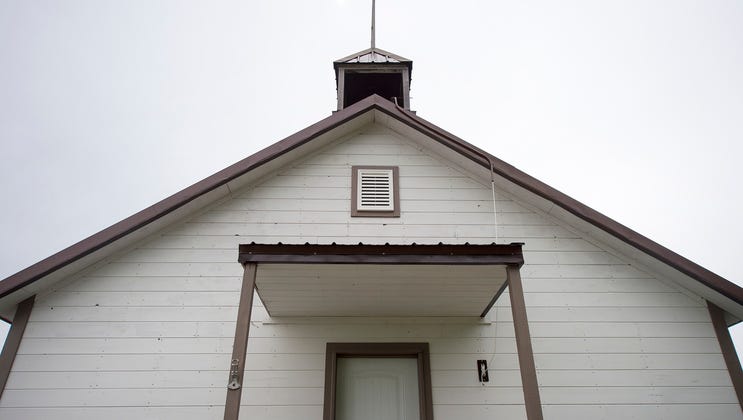
It was a sunny October Sunday afternoon in 2017, and a group of students sat at desks eager to learn about one-room schools.
They soon took in the fact that York County was a leader in the state in one-room schools before World War II, with more than 350 of those small buildings dotting the countryside. York County covers a 900-square-mile area with among the highest populations in the state, and these public one-room schools provided the educational answer from the mid-1830s to after World War II.
The one-room schools started giving way to larger schools with classrooms for specific grades before the war. After those in uniform returned and the census started increasing, the construction of regional buildings escalated and the old schools closed in bunches. The number of school districts decreased, too, moving from 32 to 15. It was a moment in which the educational system pivoted in York County.
The students learned what their forebears ate for lunch: leftovers from their family meal the night before. Produce grown on the farm. Fruit picked, legally or not, from orchards on the way to school. And yes, peanut butter and jelly sandwiches.
And they absorbed in the condition of some of those one-room schools, as characterized years ago by county school Superintendent William H. Kain: “… The school house of 50 years ago was a low, unplastered, unceiled, besmoked, old log shop, the clinking of which had fallen out enough to enable the scholars to crawl in and out.”
Those who experienced one-room school educations – with all eight grades plugged into one room – like to reflect about ubiquitous outhouses. That usually devolves into the use of Sears and Roebuck catalogs in those privies and what students liked to do with those small buildings. That is, turn them over, when, one would hope, no one was in there.
All this sounds like an efficient, peaceful and successful education experience. As we shall see, the one-room school environment offered educational limitations and really represented a mixed educational bag. When consolidations began in earnest post-World War II, it was time – and past time – for change in the county’s educational system.
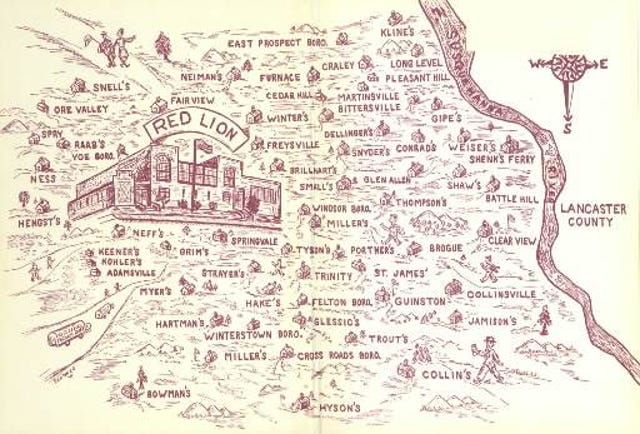
The witness
The students at the desks this Sunday in 2017 were following in the footsteps of one-room schoolers. And sitting in their seats.
These dozen home-school students, who likely never experienced the life and times of outhouses, were experiencing a one-room school, Neff’s School, a restored, relocated building in the Red Lion Area School District.
The well-schooled students were there as part of an enrichment program sponsored by the Bread Team, a public/private partnership coordinated by longtime community mover-and-shaker Ellie Shoemaker.
Here is one story they heard about a former student who sat in those seats.
When the York Daily Record published “All in One Room” about 10 years ago, it included an anecdote about Neff’s School.
It came from Pat Strayer, who walked about a mile to school. When you had a long walk, you brought your lunch and sat at a table with the teacher and talked about a range of things.
She remembered that the teacher’s husband would drive her to school and help her start the fire with wood the boys brought in.
Students had chores there and at home.
“If it was raining or snowing,” Strayer wrote, “the teacher and her husband would take me home from school. It was on their way.”
Not all teachers were that kind. Kids, for example, were paddled because they wrote with their left hand. It was a right-hand world, after all.
And when the teacher, according to William H. Kain, was “a crusty, ugly, vulgar, unread, shabbily-dressed intemperate, tobacco-spitting old bachelor who resorted to teaching because he was either too mean or too lazy to do anything else.”
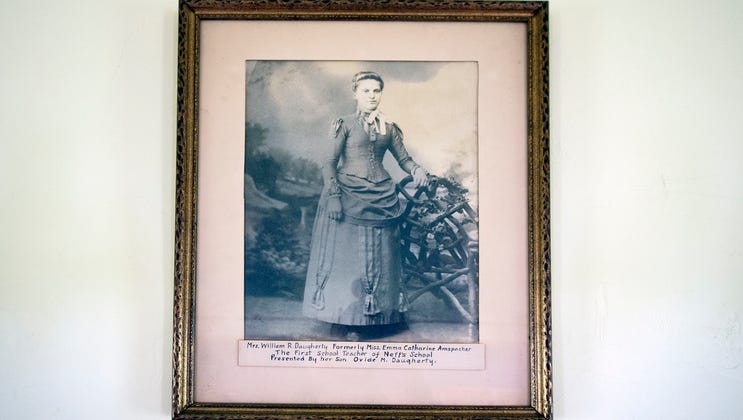
+++
With all the learnings that day in Red Lion, the schoolhouse itself provided instruction – of an unexpected kind.
The talks presented an opportunity to blend traditional and new teaching tools in a rustic school.
Roger Wilson, a retired teacher, used exhibits to make his points about life in those small schools.
For example, with special scissors, he cut a tablet from a sheet of slate.
But how would the schoolhouse cooperate with a Powerpoint presentation projected on the old black board?
This school, though renovated, did not have electricity. There never really was a reason to do so.
And therein surfaced a problem with one-room schools. As the 20th century plodded on, how could eight grades of students with one teacher and no electricity keep up with the demands of an increasingly technological world?
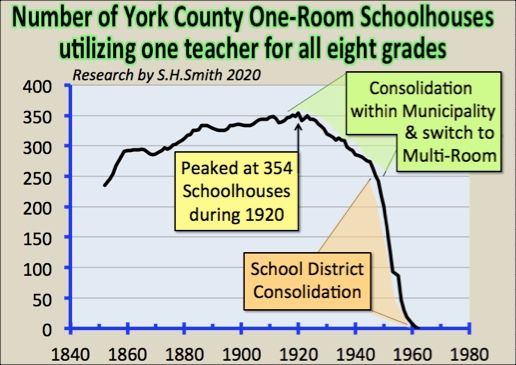
Many students aged out of these old schools after Grade 8, and with the closest high school miles away, they went to work on the family farm or nearby factories. In York County, this contributed to a high school graduation rate of less than 50 percent in 1970.
Coincidentally, York College started offering four-year classes about that time – the first for any college within county borders.
When the low high school graduation rate was added to a lack of opportunity for a nearby four-year collegiate education, the types of new thinking, fresh ideas and vocational tools an education offers went lacking in York County communities.
Then in the 1950s, newer consolidated elementary and secondary schools offered labs to learn science and kitchens to practice home economics. Gyms beckoned for sports and shops for woodworking. And these consolidated schools included libraries.
Indeed, York County did host a public library in 1935. In fact, York turned down a Carnegie Library in 1900, when many other communities boasted of them.
These regional schools caused disruption that cut different ways in communities.
This consolidation broke up the tight, often supportive community surrounding the one-room schools, and students no longer attended schools near their homes. Gone were the days that a classroom of student drank from the same ladle. Long bus rides detracted from farm work and family life.
But that disruption had a positive impact. It meant the formation of new, larger, less-insular communities surrounding these regional schools and the introduction of students to fellow pupils and teachers with different experiences and backgrounds.
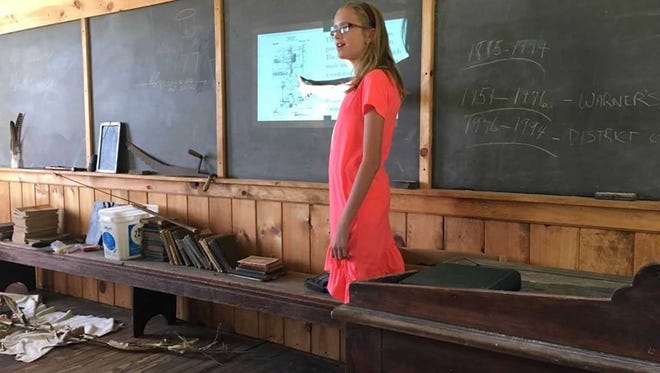
+++
Back at Neff’s School, the Felton Fire Co. attempted to fill the electricity gap with a gasoline generator to power the laptops and projector. The projected images against the old black board presented an intriguing moment to witness old and the new instructional tools – chalk versus a digitally produced image.
As it turned out, Neff’s School and all its educational traditions won the day.
For many reasons or no reason, the gas-powered generator and extension cords did not consistently power the laptops and projectors.
Earlier, Wilson had shown the home-schoolers that when one-room students had finished their ciphering, they quietly held up their tablets with the answers for the teacher to see.
At least one student presenter helped adapt this technique by walking down the schoolhouse’s center aisle with laptop in hand showing the PowerPoint slides to fellow students.
“Perhaps the dear little school house jinxed modern technology today,” Ellie Shoemaker wrote in an email later that day, “to remind us that we can communicate without 21st Century whistles and gongs.”
Another witness
A story told by journalist Joan Concilio, who compiled on room stories for the York Daily Record’s 2008 book “All in One Room:”
“I loved taking calls from folks like John O’Keefe of Shrewsbury Township. O’Keefe called me in 2007, when he was in his 80s, to tell me that he’d been in school just about all his life.
“He attended the former Kratz School from first through eighth grade, from 1928 to 1936. After four years at Glen Rock High School, O’Keefe moved on – but not for long.
“In 1947, he and his wife, Mary, made the Kratz schoolhouse their home, and he stayed there even after Mary’s death in 2006. He still remembered the Christmas tree the family had during their first year in the home, 1947. He planted it in the yard afterward, and it grew to more than 32 feet tall by ’07.
“It meant a lot to me to hear from Mr. O’Keefe… . And I hope that, like Mr. O’Keefe’s tree, what began as a small collection of memories can grow and warm hearts in York County and beyond.”
The questions
Since one-room schoolhouses, because of capacity and other factors, could no longer educate our growing population, we turned to centralized schools and larger districts after World War II. However, larger schools challenge the tight-knit culture of York County. How can we both educate our children and maintain a sense of community? In what ways can we foster that small-town feel while simultaneously providing a top-notch education?
Related links and sources Adapted from James McClure’s Oct. 30, 2017 piece “Teaching About One-Room Schools in a One-Room Schoolhouse. Also, check out Stephen H. Smith’s “Schoolhouses of Strinestown and York County numbers.” Top three photos, York Daily Record. Bottom photo, James McClure
— By JAMIE NOERPEL and JIM McCLURE


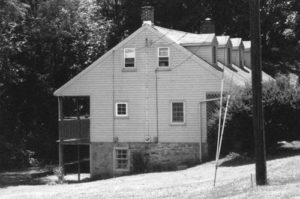
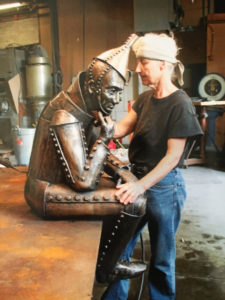
Pingback: Hometown History, Season 2 - Exploring people & issues - Witnessing York